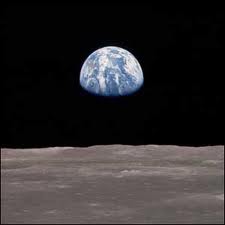January 2025
January 3, 4 - Quadrantids Meteor Shower. The Quadrantids is an above average shower, with up to 40 meteors per hour at its peak. It is thought to be produced by dust grains left behind by an extinct comet known as 2003 EH1, which was discovered in 2003. The shower runs annually from January 1-5. It peaks this year on the night of the 3rd and morning of the 4th. The crescent moon will set early in the evening, leaving dark skies for what should be an excellent show. Best viewing will be from a dark location after midnight. Meteors will radiate from the constellation Bootes, but can appear anywhere in the sky.January 10 - Venus at Greatest Eastern Elongation. The planet Venus reaches greatest eastern elongation of 47.2 degrees from the Sun. This is the best time to view Venus since it will be at its highest point above the horizon in the evening sky. Look for the bright planet in the western sky after sunset.
January 13 - Full Moon. The Moon will be located on the opposite side of the Earth as the Sun and its face will be will be fully illuminated. This phase occurs at 22:28 UTC. This full moon was known by early Native American tribes as the Wolf Moon because this was the time of year when hungry wolf packs howled outside their camps. This moon has also been know as the Old Moon and the Moon After Yule.
January 16 - Mars at Opposition. The red planet will be at its closest approach to Earth and its face will be fully illuminated by the Sun. It will be brighter than any other time of the year and will be visible all night long. This is the best time to view and photograph Mars. A medium-sized telescope will allow you to see some of the dark details on the planet's orange surface.
January 29 - New Moon. The Moon will located on the same side of the Earth as the Sun and will not be visible in the night sky. This phase occurs at 12:37 UTC. This is the best time of the month to observe faint objects such as galaxies and star clusters because there is no moonlight to interfere.
February 2025
February 12 - Full Moon. The Moon will be located on the opposite side of the Earth as the Sun and its face will be will be fully illuminated. This phase occurs at 13:55 UTC. This full moon was known by early Native American tribes as the Snow Moon because the heaviest snows usually fell during this time of the year. Since hunting is difficult, this moon has also been known by some tribes as the Hunger Moon, since the harsh weather made hunting difficult.February 28 - New Moon. The Moon will located on the same side of the Earth as the Sun and will not be visible in the night sky. This phase occurs at 00:46 UTC. This is the best time of the month to observe faint objects such as galaxies and star clusters because there is no moonlight to interfere.
March 2025
March 8 - Mercury at Greatest Eastern Elongation. The planet Mercury reaches greatest eastern elongation of 18.2 degrees from the Sun. This is the best time to view Mercury since it will be at its highest point above the horizon in the evening sky. Look for the planet low in the western sky just after sunset.
March 14 - Full Moon. The Moon will be located on the opposite side of the Earth as the Sun and its face will be will be fully illuminated. This phase occurs at 06:56 UTC. This full moon was known by early Native American tribes as the Worm Moon because this was the time of year when the ground would begin to soften and the earthworms would reappear. This moon has also been known as the Crow Moon, the Crust Moon, the Sap Moon, and the Lenten Moon.
March 14 - Total Lunar Eclipse. A total lunar eclipse occurs when the Moon passes completely through the Earth's dark shadow, or umbra. During this type of eclipse, the Moon will gradually get darker and then take on a rusty or blood red color. The eclipse will be visible throughout all of North America, Mexico, Central America, and South America.
March 20 - March Equinox. The March equinox occurs at 08:58 UTC. The Sun will shine directly on the equator and there will be nearly equal amounts of day and night throughout the world. This is also the first day of spring (vernal equinox) in the Northern Hemisphere and the first day of fall (autumnal equinox) in the Southern Hemisphere.
March 29 - New Moon. The Moon will located on the same side of the Earth as the Sun and will not be visible in the night sky. This phase occurs at 11:00 UTC. This is the best time of the month to observe faint objects such as galaxies and star clusters because there is no moonlight to interfere.
March 29 - Partial Solar Eclipse. A partial solar eclipse occurs when the Moon covers only a part of the Sun, sometimes resembling a bite taken out of a cookie. A partial solar eclipse can only be safely observed with a special solar filter or by looking at the Sun's reflection. This partial eclipse will be visible throughout Greenland and most of northern Europe and northern Russia. It will be best seen from Canada with 93% coverage.
Source: seasky.org/astronomy/astronomy-calendar-2025.html
science.nasa.gov/multimedia/2025-nasa-science-planning-guide/














